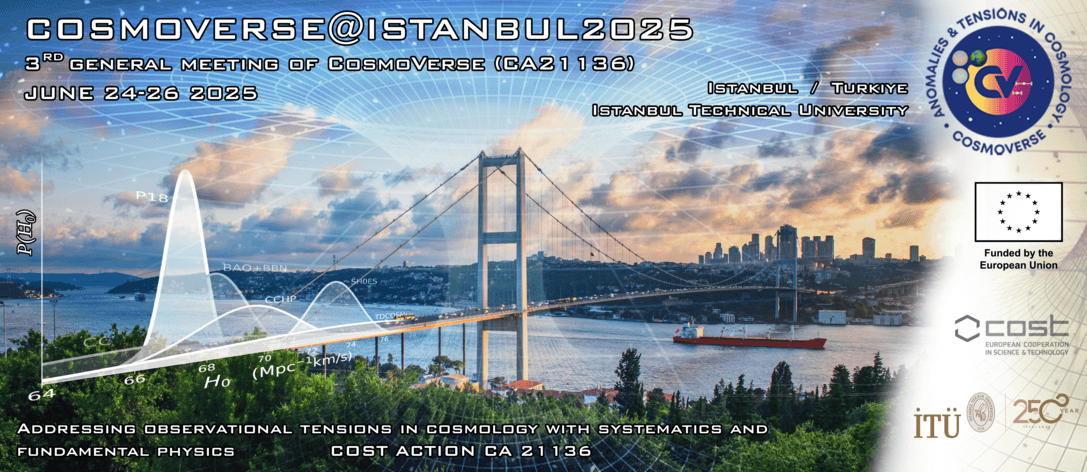Conveners
Morning session 1: (Tuesday)
- Jackson Levi Said (University of Malta)
Morning session 1: (Wednesday)
- Emmanuel Saridakis (National Observatory of Athens)
Morning session 1: (Thursday)
- Marika Asgari (Newcastle University)
The fifth (and final) data release of the Kilo-Degree Survey (KiDS) provides significantly more than just an increase in survey area. Instead, additional observations couple with improvements in data quality, data reduction, and value-added data-products, to make KiDS-DR5 the most robust and reliable release produced by KiDS to date. We leverage the lensing sample from this state-of-the-art...
Recent cosmological surveys have revealed persistent discrepancies within the context of the concordance model regarding the values of the H0 [1907.10625], σ8 [1610.04606] and ΩK [1908.09139, 1911.02087] when estimated with different datasets. Determining the level of disagreement between multidimensional fits is called "tension quantification" [1902.04029].
We approach this problem by...
We perform a stacking analysis of galaxy cluster velocity phase space using the caustic technique. By stacking 128 clusters, we create four robust stacked clusters with excellent agreement between caustic masses and binned medians. We model the gravitational potential using the NFW profile, validating the $\Lambda$CDM mass-concentration relation. Implementing the Chameleon screening model, we...
Supernova (SN) cosmology is based on the key assumption that the luminosity standardization process of type Ia SNe remains invariant with progenitor age. However, our comprehensive age measurements of 360 SN host galaxies reveal a significant (5.5 sigma) correlation between standardized SN luminosity and progenitor age, which is expected to introduce a serious systematic bias with redshift in...
I will discuss two research projects about testing DDE and Constraining high-\texorpdfstring{$z$}{z} reionization with cosmological data. First, we explore an extension of the $\Lambda$CDM model that introduces a time-dependent evolution of the pressure parameter $p$ in the dark energy fluid, where the corresponding energy density $\rho$ is derived by a continuity equation and the equation of...
We formulate topological holographic dark energy and we present how it can alleviate both $H_{0}$ and $\sigma 8$ tensions. The modified cosmological model is obtained by the application of the gravity thermodynamics conjecture when the corresponding Wald Gauss Bonnet entropy term is added to the standard Bekenstein Hawking one. Thus, one obtains modified Friedmann equations that depend on the...
I discuss our ongoing efforts to measure the cosmic dipole in new galaxy surveys, referencing the systematic effects which can influence its measurement and forecasting the contribution of forthcoming surveys. This is motivated by the nascent cosmic dipole tension: the disagreement between the CMB dipole and counts of extragalactic sources, which has reached a high level of statistical...
A scale invariant gravity theory containing two scalar fields, dust particles and a measure defined from degrees of freedom independent of the metric. The integration of the degrees of freedom that define the measure spontaneously break the scale symmetry, leaving us in the Einstein frame with an effective potential that is dependent on the density of the particles. The potential contains...

